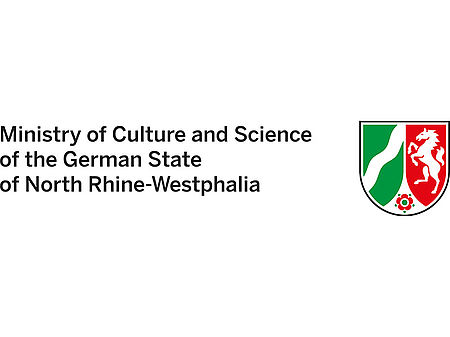Peer Review: Why is it important?
Scientific findings and discoveries can have far-reaching implications for individuals and society. This is one reason why they undergo a process of quality control known as 'peer review' before they are published.
Peer review involves subjecting the author's scholarly work and research to the scrutiny of other experts in the same field to check its validity and evaluate its suitability for publication.
A peer review helps the publisher decide whether a work should be accepted.
How the peer review process works
When a scholarly work is submitted to a scientific journal, it first undergoes a preliminary check known as a desk review. The editor decides if the manuscript should be sent for peer review or be immediately rejected. The next step is to select experts from the same field who are qualified and able to review the work impartially. Ideally the work is evaluated by multiple experts.
The primary goals of a peer review are to determine whether a scholarly work falls within the journal's scope, to check whether the research topic has been clearly formulated, and to decide if a suitable approach has been taken to address the scientific issues involved. The reviewer also examines the methodology to determine whether the author's results can be reproduced, and he or she assesses the novelty and originality of the research findings. If a work involves patients or animals, then the peer review will also cover ethical aspects. Finally, the reviewer will also rate the 'readability' of the work, assessing how logically the argument has been constructed and whether the conclusions are well-founded. In addition, the author of the work will generally receive useful advice on how to improve their work.
Peer reviewers normally provide their assessment in the form of a questionnaire which they return to the editor. This forms the basis for deciding whether the work should be accepted, considered acceptable with revisions, or rejected. Submissions with serious failings will be rejected, though they can be re-submitted once they have been thoroughly revised. In principle, editors have the final say in how many reviewer reports they obtain and to what extent they follow the recommendations therein.
If a work is rejected, this does not necessarily mean it is of poor quality. A paper may also be rejected because it doesn't fall within the journal's area of specialisation or because it doesn't meet the high standards of novelty and originality required by the journal in question. Another reason a paper may be rejected is that the reviewers do not agree that the approach taken by the author is innovative. There are also some journals which take a more relaxed stance in regard to originality and focus more on the extent to which the author has followed correct scientific procedures. It is therefore common for authors to submit their paper to a different journal after receiving a rejection. Some prestigious journals reject over 90 percent of papers submitted to them, while the rejection rate across all scientific journals is somewhere in the region of 50 percent. If an article is rejected, authors usually resubmit to another journal. Whether a resubmission to the same journal is possible is indicated in the respective journal's policy and should be discussed with the editor if necessary.
Different types of peer review
The term peer review actually encompasses a number of different approaches, the most common of which are the following:
- single-blind peer review: the name of the reviewer is hidden from the author;
- double-blind peer review: both the reviewer and the author remain anonymous to each other.
There are also considerable differences in the level of detail with which papers are evaluated. For example, some journals make additional use of anti-plagiarism software, organise separate reviews of the author's methods and statistics, or examine the submitted illustrations to detect whether they have been manipulated. There is also an increasing number of journals which focus on scientific software or research datasets, and the peer review process has been adapted to fit these contexts, too.
Peer review is also used by conference organisers to select which contributions to include in their programme. And funding bodies even use peer review methods to assess the eligibility of research proposals for funding.
Criticisms of peer review
All the methods mentioned above have their advantages and disadvantages. For example, critics of the double-blind method argue that reviewers can guess who the authors are by looking at the references they cite. They suggest that this could undermine their neutral stance. The evaluation of an academic paper is also affected by the reviewer's scientific beliefs and by the care and effort they choose to invest in the process.
Peer review has recently come in for major criticism following cases where reviewers failed to spot serious errors in the author's methodology. The reasons for 'failures' in the peer review process include peer reviewers' heavy workloads as more papers are published and poor selection of reviewers by editorial boards.
Another objection that is frequently raised is that peer review is not transparent enough, not just because the reviews are inevitably subjective (especially if reviewers are unable to separate themselves adequately from their particular schools of thought), but also because reviewers may not appreciate the value of a new idea or may withhold – or simply not be asked to provide – relevant information on conflicts of interest.
Another key criticism of peer review is that the process may stretch over a long period of time, generally weeks or months, but occasionally even years.
Some people also suspect that journals which claim to have implemented peer review actually carry out very superficial assessments, or none at all. For further information see the FAQ on "Predatory Publishing".
It is generally accepted that peer review cannot completely eliminate cases of fraud and the publication of low-quality papers. Nevertheless, peer review continues to be favoured despite all the criticism because it has ultimately proved its worth and shown that in most cases it can help improve the quality of publications – especially if authors are able to view the report and work through the comments. In the end, of course, responsibility lies with the authors who are required to demonstrate rigour, probity and scientific reproducibility as part of the scientific process. The peer review concept is also constantly being adapted to counter criticism such as the points mentioned above.
Alternatives to the standard peer review process
The variants described above are all forms of pre-publication peer review, in which an article is peer-reviewed prior to its formal publication. But efforts are also being made to experiment with different alternatives, with the hope that these may address some of the criticisms mentioned above:
- Open peer review (or crowd-sourced peer review) is a collective term for various methods that seek to open up the peer-review process, for example by revealing the identity of authors and peer reviewers or even providing access to the reviews themselves.
- Post-publication peer review is a generic term for all forms of feedback and commentary on an article that take place after publication. It can therefore be combined with open peer review. The basic idea is to publish a manuscript after nothing more than a rough, preliminary review – or no review at all – and to leave the corresponding evaluation and assessment to the scientific community. The F1000 platform is a well-known example of this approach. In addition, post-publication peer review generally allows people to publish comments and feedback on articles that have already been published. These comments are submitted within a formalised process, either on the publishing platform itself or on external platforms such as PubPeer.
- Other alternatives include redirecting rejected manuscripts to another, potentially more suitable journal together with the review reports, thereby shortening the subsequent peer-review process. This is typically referred to as cascading peer review when the manuscript is submitted to another journal from the same publisher, or portable peer review when the manuscript and its peer-review reports are also submitted to a different publisher. The goal is to avoid needlessly duplicated review effort. A similar approach is taken by the Review Commons platform, an initiative that works in affiliation with a consortium of life science journals. Review Commons makes manuscripts available on a preprint server before submission to a journal, where they can be peer-reviewed independently of any particular journal. The authors then use the peer-review reports as a basis for deciding which of the participating journals is the best choice for their manuscript. They then submit this to the journal together with the peer-review reports.
All of these alternatives seek to address specific problems of the peer-review process, yet some of them may raise new challenges of their own.
Informal methods of obtaining feedback
Another option is to seek informal feedback on a manuscript, a process that is typically initiated by the author themselves. One possibility is to simply send the manuscript to colleagues and ask for their feedback; another is to upload the manuscript to a preprint server and share the link on a blog, via email, or on social media channels such as Twitter. The advantage of this approach is that the author can quickly get feedback on their manuscript before they submit it. The downside is that the author cannot be sure that their manuscript has been thoroughly reviewed, and the advice and comments they do get may offer little help in improving the manuscript. What is more, this approach is not recognised as a valid form of peer review in the strictest sense of the word.
Rapid peer review or fast-track peer review
The traditional peer-review process generally takes weeks or months. Some life-science journals have now introduced a fast-track peer-review process for submissions on specific topics, for example those relating to public health. This “accelerated” process draws on a pool of reviewers who have agreed to provide quicker reviews while maintaining the same degree of thoroughness. This fast-track process provides the fastest possible access to scientific findings in the area concerned without compromising on quality assurance. To find out whether a journal offers this service, please consult their website.
Acknowledging peer review as a service
As a rule, peer reviewers do not get paid for their work, because peer review is an integral part of the scientific process. Some publishers “reward” their reviewers by granting them free access to the publisher’s archive for a limited period of time.
Peer reviewers can also increase the visibility of the services they provide by making use of platforms such as Publons, which give researchers an opportunity to present their contributions to the scientific quality-assurance process. Publons allows researchers to indicate how many manuscripts they have peer-reviewed for each journal. However, the peer-review reports themselves can only be viewed if the journal has installed an open peer-review process and if the authors and reviewers consent to their publication.
Researchers can also refer to their peer-review activities on their CV.
How to become a peer reviewer
In order to evaluate other researchers’ manuscripts, you need a certain amount of expertise in the subject area. Editors mostly become aware of potential reviewers through publications or lectures. In addition, major publishers also maintain reviewer databases that contain each person’s specialist subject areas and contact details. Some journals also allow authors to suggest reviewers when they submit their manuscript. This makes the editor’s work easier, and they are not obliged to accept the suggestion.
How many peer reviews should I write?
There is no standard answer to this question because it largely depends on each individual’s interests, resources and available capacity. As a rule of thumb, you should aim to write as many peer reviews as you have received for your own work.
Peer reviews and good research practice
Since peer review is an integral part of the scientific process, it is also subject to the rules of good research practice. This means candidates are expected to disclose any lack of expertise or possible conflicts of interest to the editorial board. It also means that any manipulation of the peer-review process or the submission of incorrect or discriminatory peer-review reports is regarded as scientific misconduct.
See also
Journal quality and standing: which aspects are relevant to open access?
Faster dissemination of research findings – key facts about preprints
An introduction to good research practice, research misconduct and academic integrity
Disclaimer
Important note: The information and links provided here do not represent any form of binding legal advice. They are solely intended to provide an initial basis to help get you on the right track. ZB MED – Information Centre for Life Sciences has carefully checked the information included in the list of FAQs. However, we are unable to accept any liability whatsoever for any errors it may contain. Unless indicated otherwise, any statements concerning individual statutory norms or regulations refer to German law (FAQ updated 03/2022).
Contact

Dr. Jasmin Schmitz
Head of Publication Advisory Services
Phone: +49 (0)221 999 892 665
Send mail
References
Schmitz, J. (2014). Peer Review. In Technische Informationsbibliothek (TIB) (Hrsg.), CoScience – gemeinsam forschen und publizieren mit dem Netz. Hannover, Technische Informationsbibliothek. (German only)
Wilson, J. (2017). PEER REVIEW. The Nuts and Bolts: A Guide for Early Career Researchers. London, Sense about Science. (3. ed.)
Wagner, E. (2006). Ethics: What is it for? Nature.com Blogs, 14. Juni 2006. (accessed 05/12/2022)
Anderson, K. (2014). Your Question of the Day – What is „Peer Review“? The Scholarly Kitchen, 24. Juli 2014. (accessed 05/12/2022)
Harnad, S. (2014). Crowd-Sourced Peer Review: Substitute or supplement fort he current outdated system? LSE – The Impact of Science Blog, 21. August 2014. (accessed 05/12/2022)
Smith, K. L. (2014) Just the Tip of the Iceberg | Peer to Peer Review. Library Journal, 13. März 2014. (accessed 19/12/2022)
Ross-Hellauer, T. (2017). What is open peer review? A systematic review. F1000Research, 6(588).
Table 1: Most common types of research misconduct. In Mousavi, T. & Abdollahi, M. (2020). A review of the current concerns about misconduct in medical sciences publications and consequences. DARU Journal of Pharmaceutical Sciences, 28, 359–369.
Related links
Publons
F1000Research
PubPeer
Review Commons
Further Information
Schmitz, J. (2016). Picturing Peer Review [poster presentation]. EA Annual Conference, 27 January 2016, Mainz.
Schmitz, J. & Schroeder, C. (2022). Gefälschte Ergebnisse in Fachjournalen [radio report]. Deutschlandfunk Kultur, 24 March 2022. (German only)





